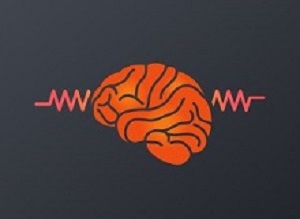Epileptic seizures can probably not be predicted by changes in brain wave patterns that were previously assumed to be characteristic precursors. This is the conclusion reached by scientists from the University of Bonn in a recent study.
During an epileptic seizure, large nerve cell clusters in the brain discharge simultaneously. The consequences are dramatic muscle spasms and loss of consciousness, which can be life-threatening. Many researchers assume that the brain has crossed a so-called "tipping point," which almost inevitably leads to a seizure.
The lead-up to this tipping point is supposedly heralded by characteristic changes in brain waves – so says a common hypothesis. According to this theory, nerve cell networks reproduce their own activity when close to this point: The brain waves they produce are very similar to previous ones. At the same time, they react to disturbances with much stronger discharges than normal. Additionally, it takes longer for their activity to normalize. "We call this 'critical slowing down', CSL for short," explains Professor Dr Klaus Lehnertz from the department of epileptology at the University Hospital Bonn.
Together with his former colleague Theresa Wilkat and his doctoral student Thorsten Rings, the physicist searched for such CSL events. For this purpose, the researchers analysed brain wave recordings of 28 subjects with epilepsies that could not be treated with medication. Measurements were taken using electrodes implanted at various sites in the subjects' brains. "This is for diagnostic purposes, for example, to identify the site from which the seizures originate," explains Lehnertz.
The subjects had up to 70 sensors each in their brains. The scientists analysed each individual EEG curve recorded by the sensors using sophisticated statistical methods. "We not only considered the hours before an attack, but also looked at a period of up to two weeks," Wilkat explains.
The result was disappointing: "Although we found a number of CSL events, these usually occurred completely independent of a seizure," emphasizes Lehnertz. "Only in two subjects we were able to observe a weak relationship with subsequent seizures." His conclusion: "Critical slowing down" is not suitable as an early warning sign, even if this is claimed in literature again and again.
He considers it more promising not to look at individual sites in the brain, but to understand these as parts of a network that influence each other. The cause of a seizure is most likely not the activity of a single nerve cell cluster that gets out of control. "Instead, there are feedback and amplification effects that, as a whole, lead to this massive temporary brain malfunction," he emphasises. Understanding these processes will also allow better forecasting techniques to be developed.
Epileptic seizures usually strike like a bolt from the blue, which significantly impacts the daily lives of those affected. For example, sufferers are not allowed to drive a car or carry out certain activities with a high risk of injury. Epileptologists, physicists and mathematicians have therefore been trying to predict the dangerous malfunctions of the brain for more than three decades – so far with mixed success: There certainly are systems that can detect seizure precursors (using indicators other than "critical slowing down"), but at present they work only for about half of the subjects and are not particularly reliable. They cannot recognise every precursor of a seizure and are also prone to false alarms.
However, this is not the only reason why scientists around the globe are looking for more reliable indicators in order to be able to warn subjects in good time. They also hope to be able to prevent an attack in advance through appropriate interventions.
Abstract
There is an ongoing debate whether generic early warning signals for critical transitions exist that can be applied across diverse systems. The human epileptic brain is often considered as a prototypical system, given the devastating and, at times, even life-threatening nature of the extreme event epileptic seizure. More than three decades of international effort has successfully identified predictors of imminent seizures. However, the suitability of typically applied early warning indicators for critical slowing down, namely, variance and lag-1 autocorrelation, for indexing seizure susceptibility is still controversially discussed. Here, we investigated long-term, multichannel recordings of brain dynamics from 28 subjects with epilepsy. Using a surrogate-based evaluation procedure of sensitivity and specificity of time-resolved estimates of early warning indicators, we found no evidence for critical slowing down prior to 105 epileptic seizures.
A tipping point in a complex system is a threshold that, when exceeded, can lead to large and devastating changes in the state of the system. If the system is getting closer to a tipping point, the restoration to its normal state after some perturbation takes increasingly longer and is associated with an increase in the size of fluctuations. Both these aspects have been proposed as early warning signals of tipping, usually referred to as critical slowing down. Epileptic seizures have repeatedly been claimed as a potential field of application on constructing early warning signals through identifying characteristics of critical slowing down on the basis of electroencephalographic time series. We investigate whether there is evidence for critical slowing down prior to seizures by investigating long-lasting, multichannel electroencephalographic recordings from 28 subjects with epilepsy. Applying state-of-the-art statistical approaches that involve specifically designed surrogate tests, we do not find evidence for critical slowing down prior to more than 100 epileptic seizures.
Authors
Theresa Wilkat, Thorsten Rings, Klaus Lehnertz
[link url="https://www.uni-bonn.de/news/233-2019"]University of Bonn material[/link]
[link url="https://aip.scitation.org/doi/10.1063/1.5122759"]Chaos: An Interdisciplinary Journal of Nonlinear Science abstract[/link]

